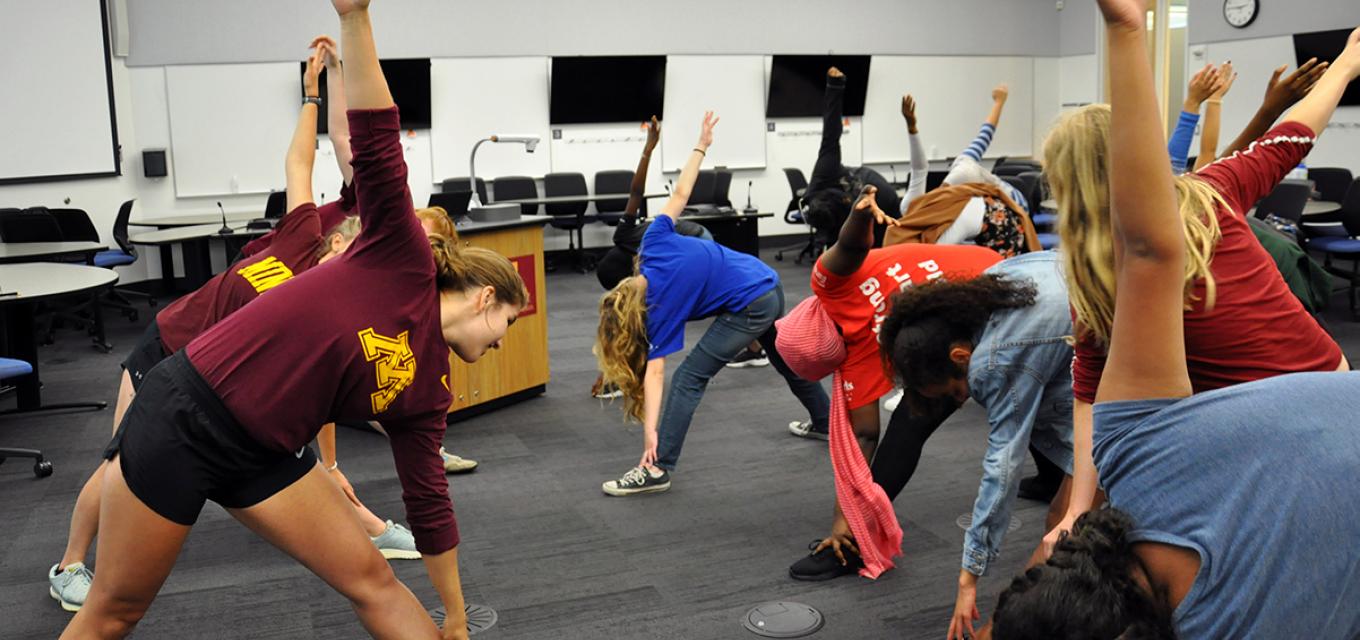2020 Spring / Summer

Youth Sports: today, and tomorrow
Kinesiology faculty weigh in on the current state of youth sports
Over 60 million children in the United States are involved in youth sports, which can provide children with confidence, skill development, and friendships. Yet youth sports are often described as exclusive, expensive, or unsafe. Why is that, and what can we do about it?
School of Kinesiology faculty are conducting studies and disseminating findings about the youth sport experience, covering topics from positive youth development to injury prevention and rehabilitation and cultural inclusion. They weighed in on the current state of youth sports and its future.
Coach training and parent education
Education has the potential to positively affect all stakeholders and aspects of youth sport, from parents and coaches to organizations and health care. Currently, youth sport organizations are left to their own devices on how to find and utilize research-based best practices regarding all aspects of the youth sport equation, from the overarching organizational practices to individual sport or player programming. There are no official regulations, and there are minimal educational requirements for coaches or resources available to parents.
“People often think sport inherently teaches children ‘life skills,’” says Maureen Weiss, professor of psychology of physical activity. “But it requires an intentional, programmatic structure for that to be true.”
“The U.S. has continued to cut physical education in schools, and families are leaning even more heavily on sport as a way for children to be physically active,” says Diane Wiese-Bjornstal, professor of sport and exercise psychology. “Highly trained physical educators used to teach children how to safely move and instill life-long physical activity habits. Now, it’s volunteer parents or coaches, and they need resources to help them build a safe and inclusive environment for youth to be active in.”
Opportunities for professionals
- Aspen Institute’s Project Play | research-based resources for parents, coaches, and leaders in youth sport
- The National Youth Sports Strategy | a nation-wide youth sport strategy released by the U.S. government in 2019
- Institute for the Study of Youth Sport | a group of scholars whose research focuses on youth sport
- The Physical Activity and Sport Science | School of Kinesiology researchers and labs working in sport and activity
- Game On: Women Can Coach Toolkit | a toolkit created by the Tucker Center for women coaches
- Women in College Coaching Report Card | trends and data in the coaching industry
- Women’s Coaches Symposium | an annual educational event for women coaches put on by the Tucker Center
Access
“Right now we talk about sport like it’s for everyone,” says Chelsey Thul, lecturer of psychology of physical activity.
Those who are able to participate have the potential to improve skills and confidence, but children who have the most to gain are often those excluded, states Weiss. “For example, children from lower socio-economic groups, different cultural or religious backgrounds, or who are overweight or not as skilled aren’t being given the same opportunities to participate.”
Youth sport is highly privatized, meaning that participation often requires a financial commitment, transportation, and/or the skills to make the team. This leaves out children with the most to gain from learned life skills, physical activity, and positive social experiences.
Expectations
Fewer than two percent of NCAA student-athletes go on to become professional athletes. Research has proven that early sport specialization causes injury and burnout, and currently 50-70 percent of youth drop out of sports by age 13.
“When parents and coaches work together to create a positive experience for children that does not reflect a ‘win-at-all-cost’ mentality, it is better for the child’s development, health, well-being, and often performance,” says Nicole M. LaVoi, director of the Tucker Center for Research on Girls & Women in Sport.
What can parents do?
“The most important thing you can do to ensure your child is having a positive sport experience is to ask them about it,” said Weiss. “Ask them what they like, let them choose the sports they play, and support their decisions.”
Ask! Follow the ABC Model: Ask your children what they wish you did or didn’t do when it comes to their sports involvement, Believe them, and Change your behavior.
And, stay educated (see resources above).
Story by Brittany Vickers | Photos by Tucker Center INTERN Team | Spring/Summer 2020